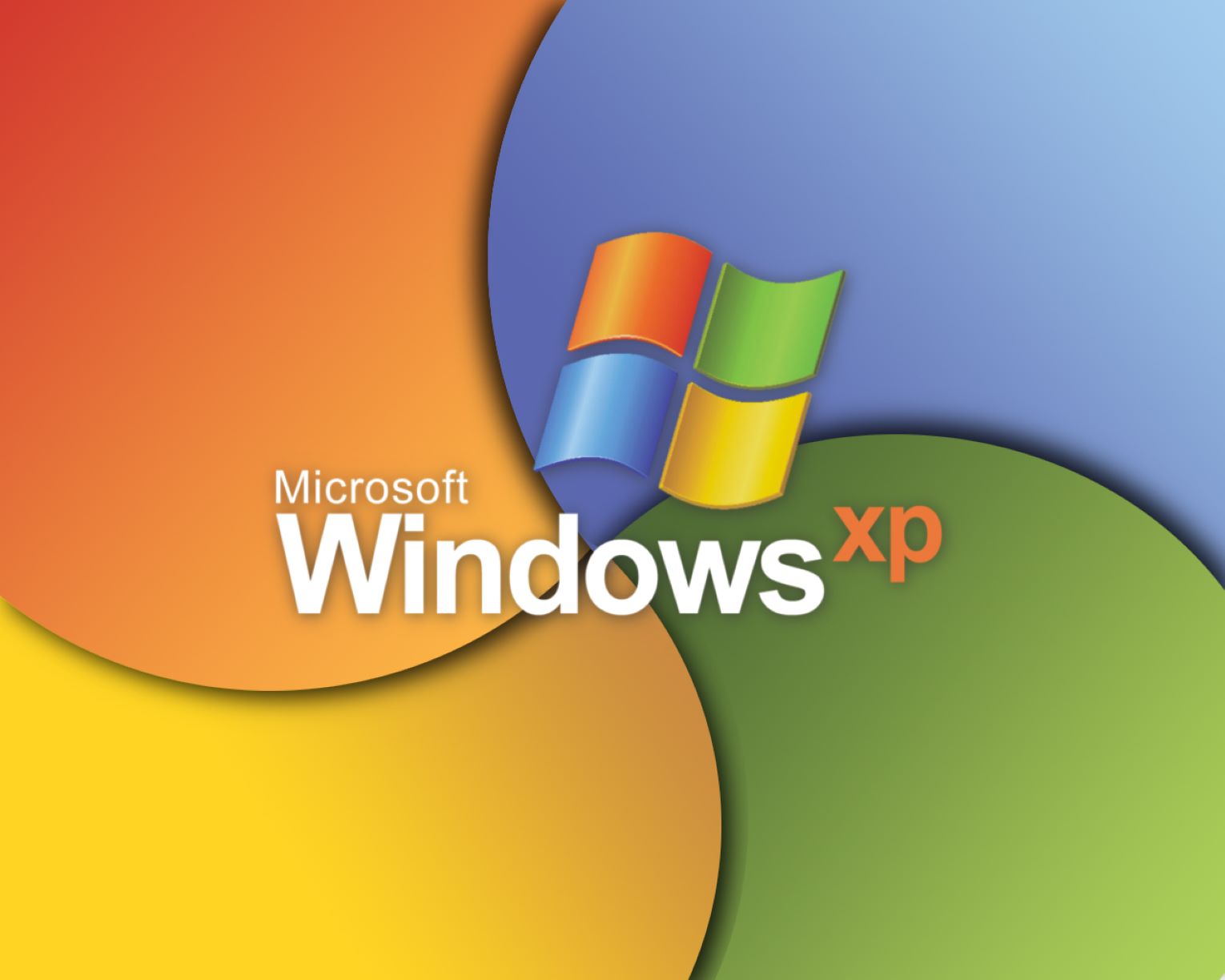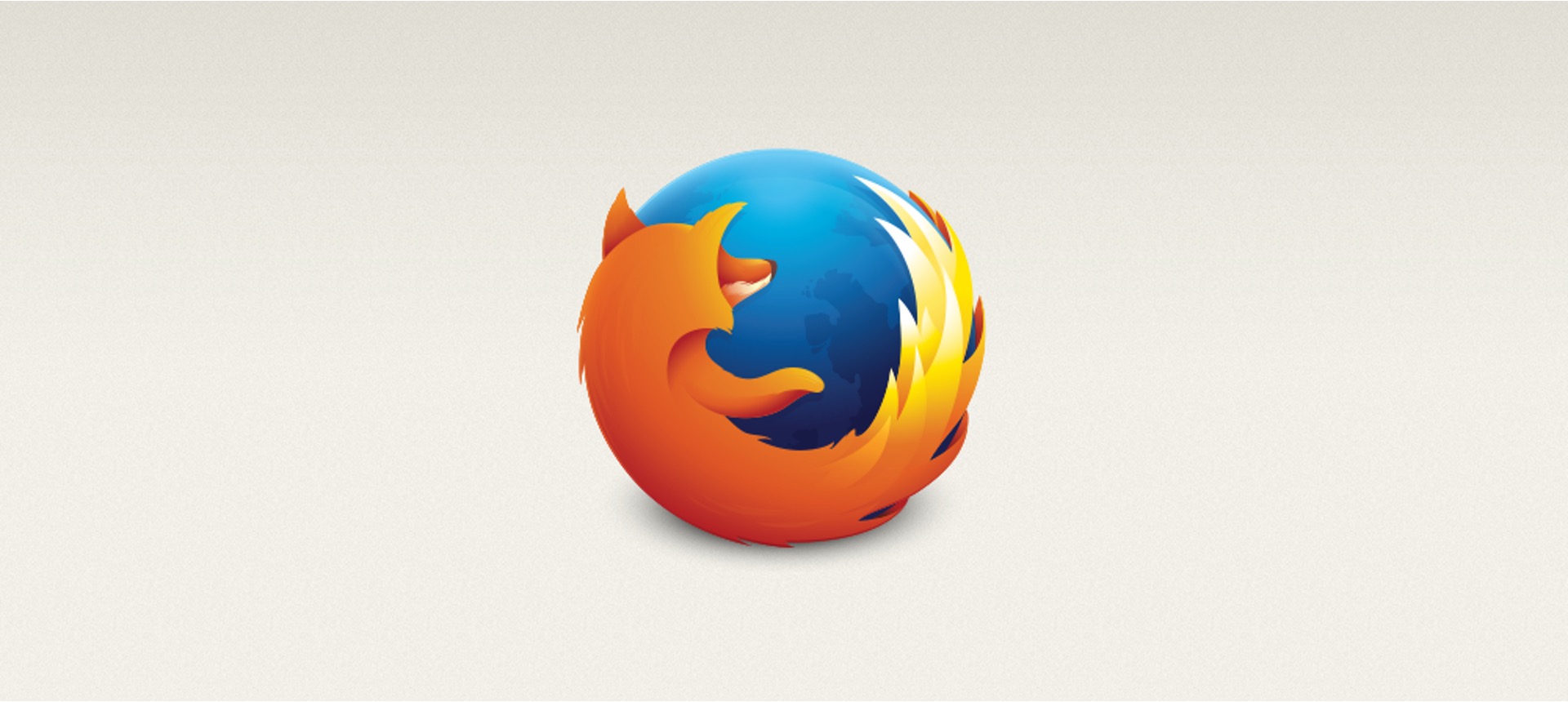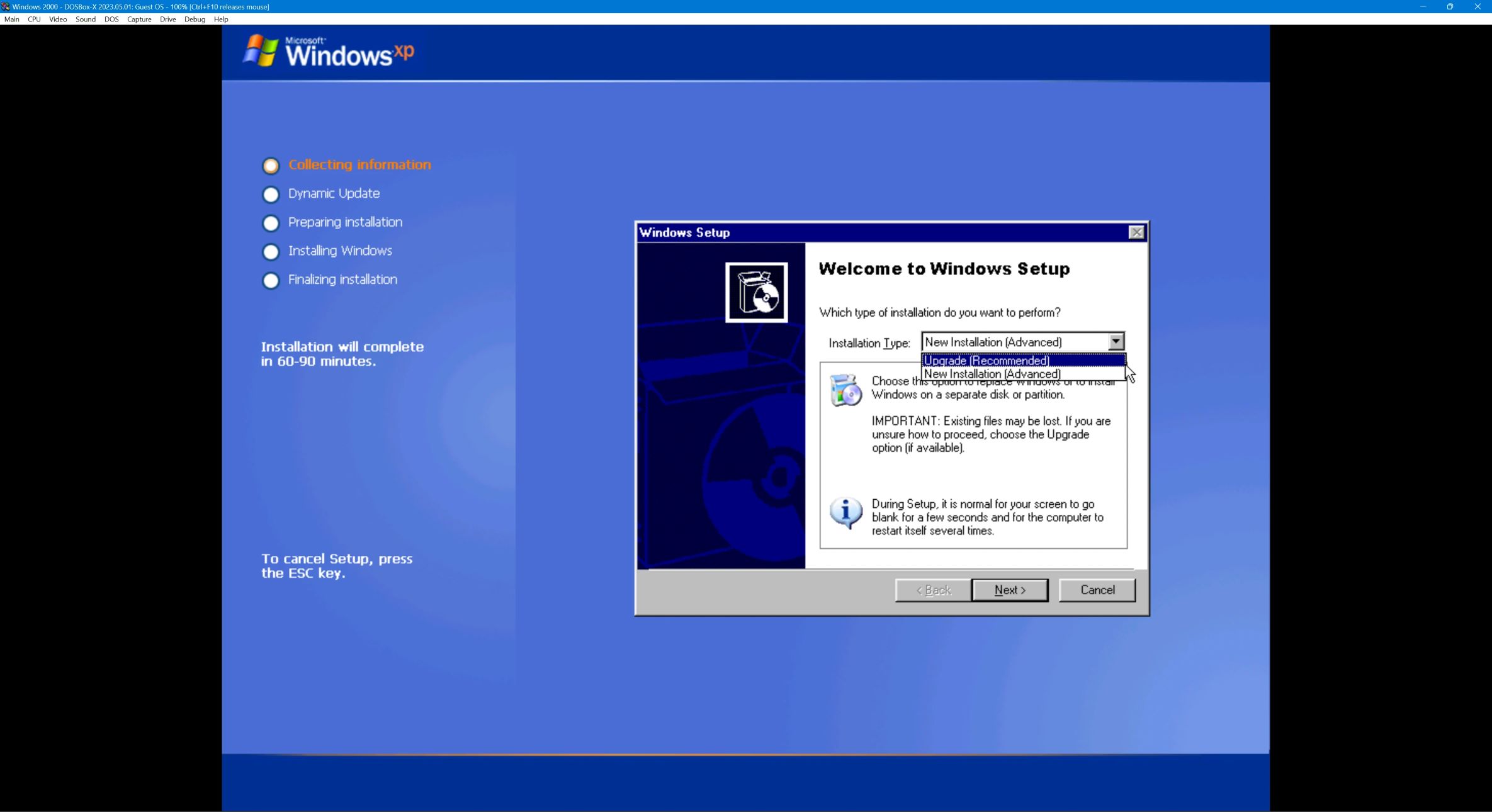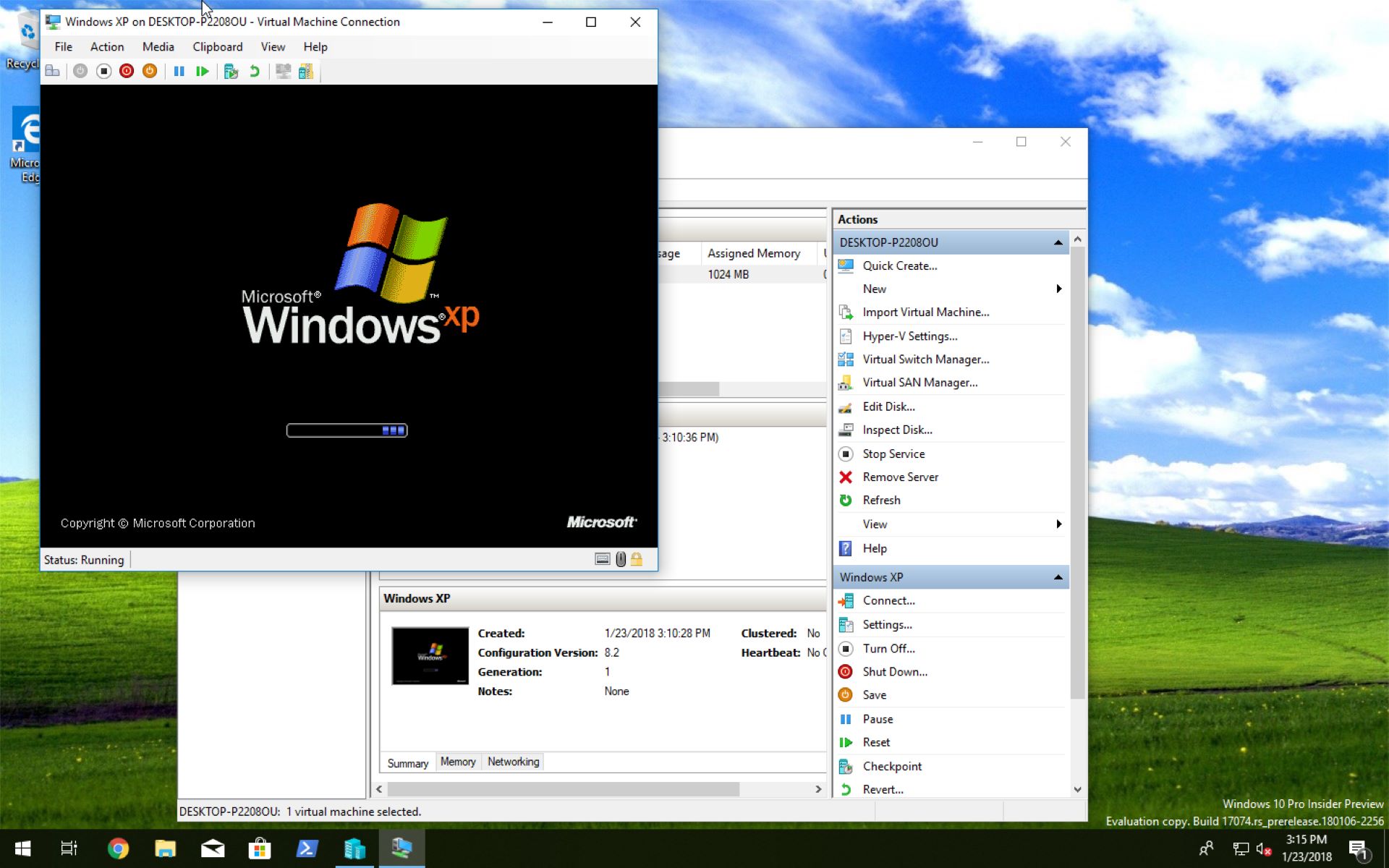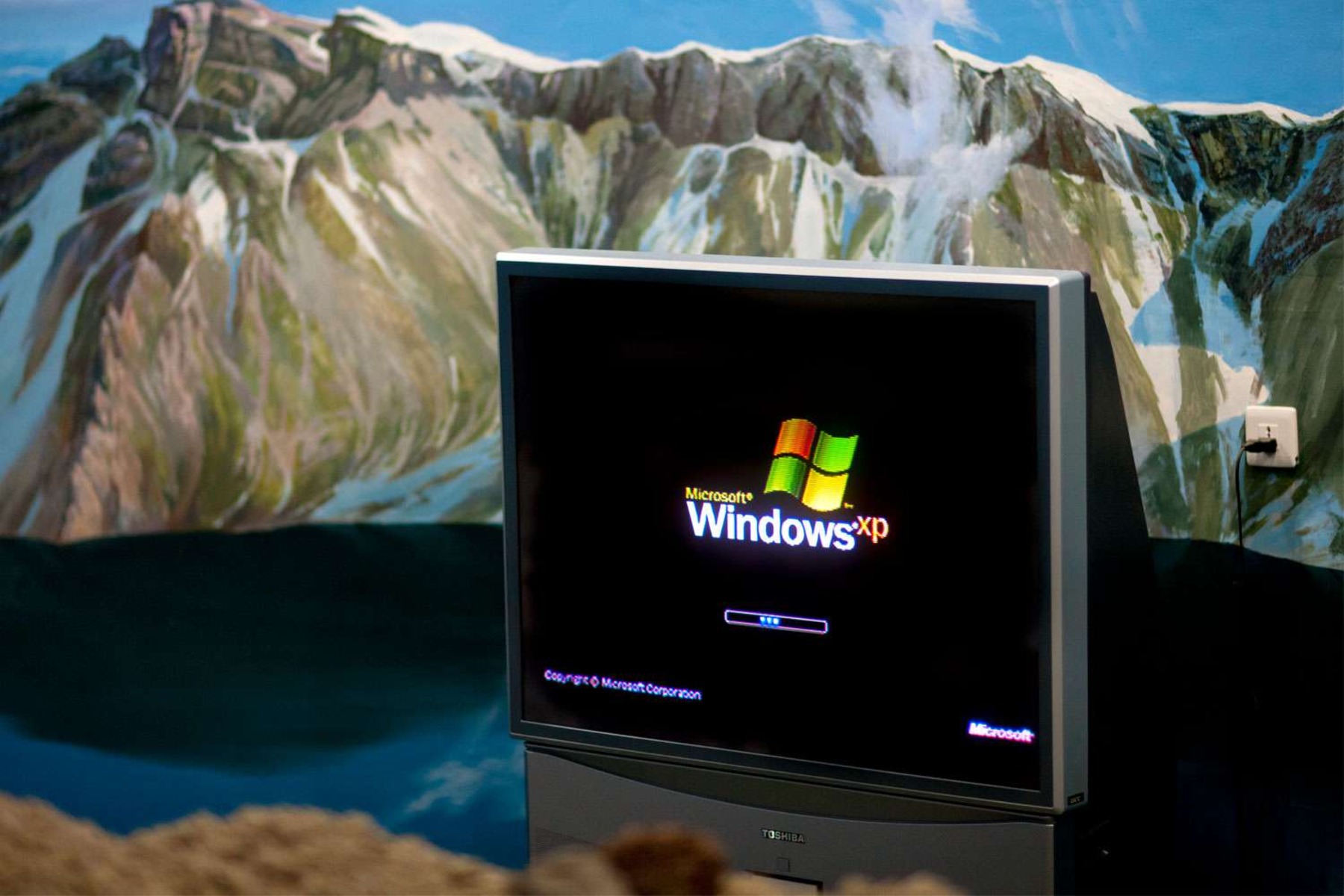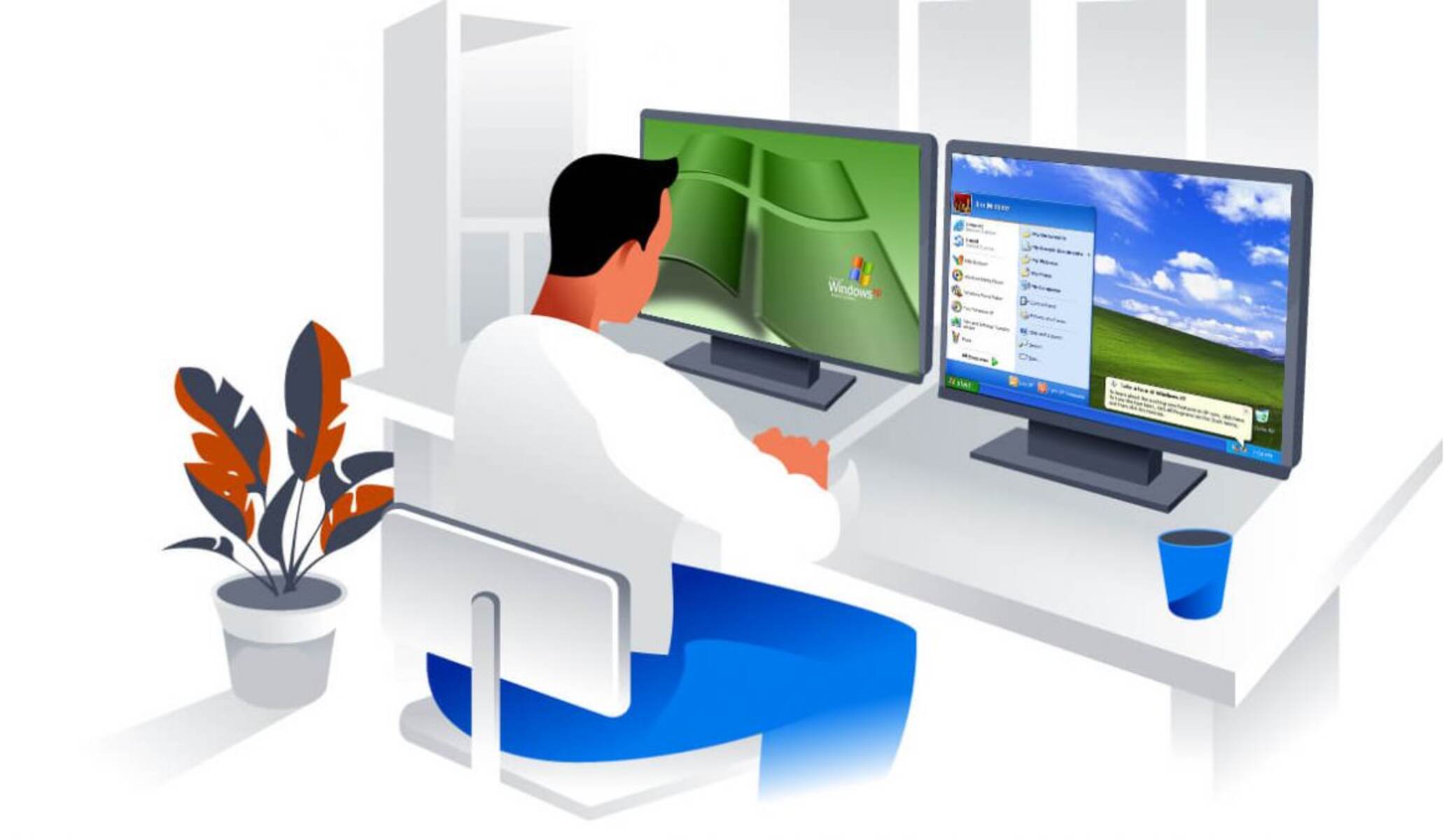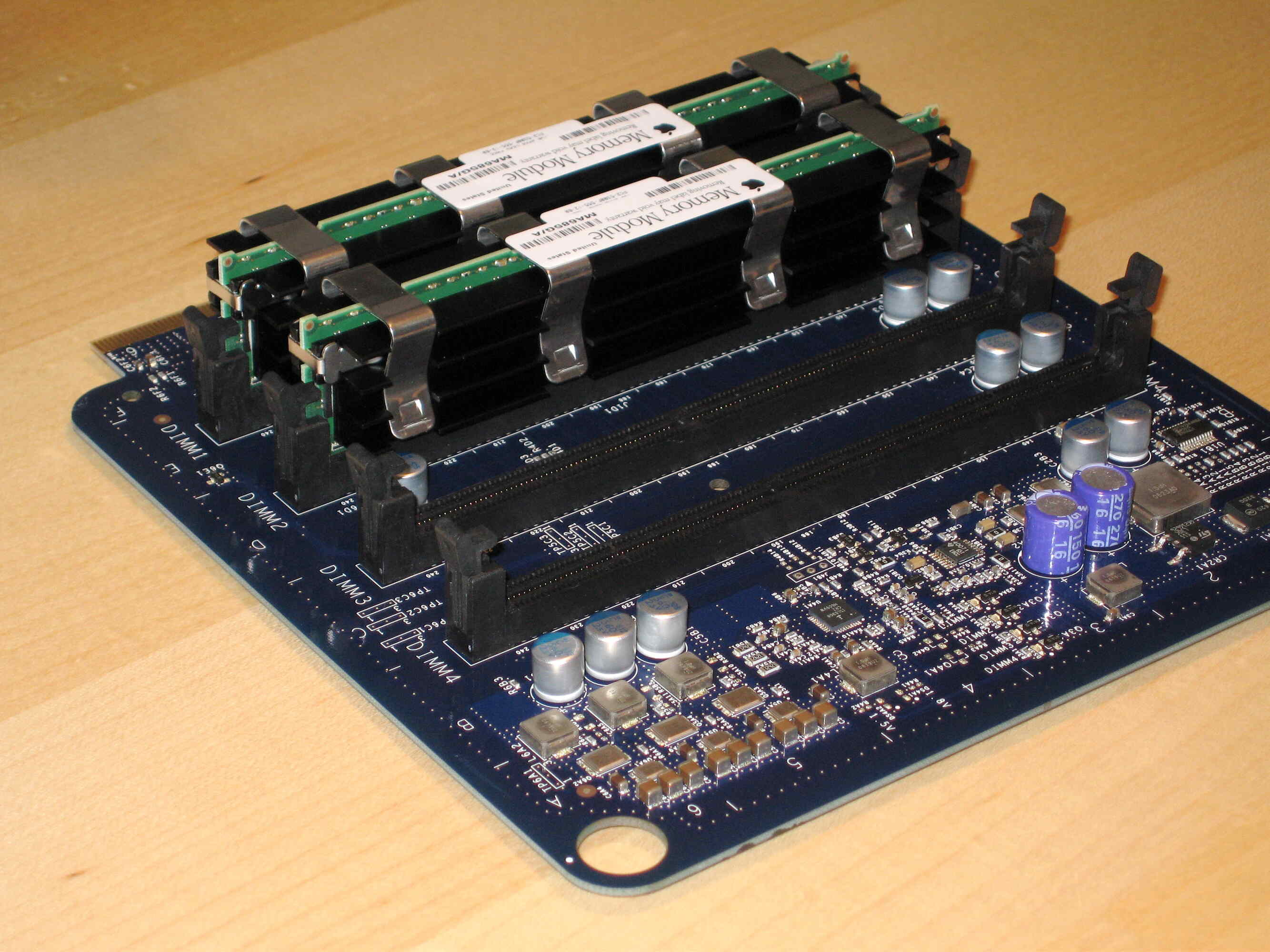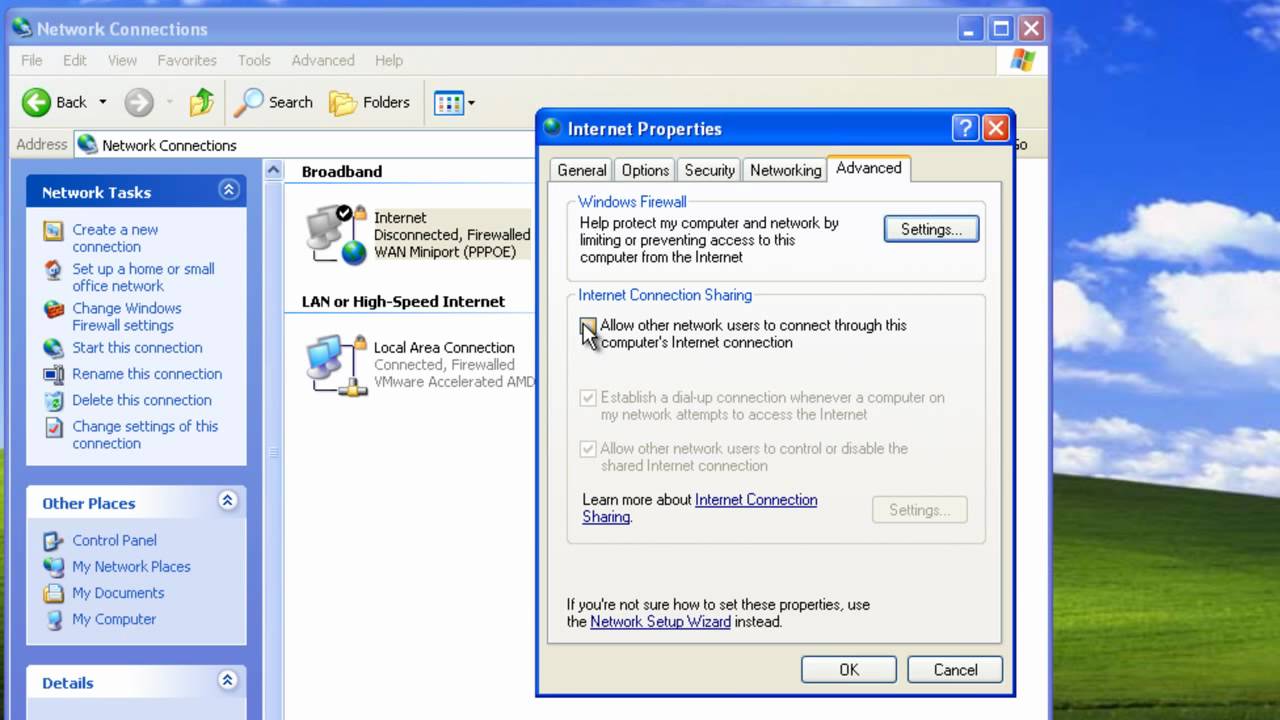Introduction
Windows XP, released by Microsoft on October 25, 2001, is arguably one of the most widely used operating systems in the history of personal computing. It succeeded Windows 2000 and brought significant enhancements, making it a beloved choice among users worldwide. With its user-friendly interface, advanced features, and improved stability, Windows XP marked a major milestone in the evolution of Microsoft operating systems.
During its heyday, Windows XP was the go-to operating system for both home and business users. Its success can be attributed to several factors, including its intuitive graphical user interface (GUI), compatibility with a wide range of software and hardware, and improved security measures compared to its predecessors.
In this article, we will delve into the history of Windows XP, explore its features, discuss system requirements, highlight the advantages and disadvantages, and compare the different editions of Windows XP.
Whether you’re a nostalgic user who fondly remembers the days of Windows XP or a curious individual interested in exploring the evolution of operating systems, this article will provide valuable insights into the world of Windows XP.
History of Windows XP
Windows XP was developed as part of Microsoft’s Windows NT family of operating systems, which aimed to combine the reliability and security of the Windows NT line with the user-friendly interface of the Windows 9x line.
The development of Windows XP began in the late 1990s under the codename “Whistler.” Microsoft intended for it to be an upgrade to Windows 2000, with a focus on improving the user experience and compatibility with emerging technologies.
On August 24, 2001, Microsoft released Windows XP to manufacturing, and it was officially launched on October 25, 2001. The release brought a significant overhaul to the Windows operating system, introducing a more visually appealing interface, faster startup times, and enhanced multimedia capabilities.
One of the standout features of Windows XP was its iconic start menu, which replaced the classic Windows 9x Start button with a more streamlined and intuitive design. This made it easier for users to access and navigate through their files, applications, and settings.
Another groundbreaking aspect of Windows XP was its compatibility with a wide range of hardware and software. Microsoft aimed to ensure that the majority of existing applications and devices would work seamlessly with the new operating system, easing the transition for users.
Windows XP quickly gained popularity and widespread adoption, becoming the go-to operating system for businesses and home users alike. It was praised for its stability, performance, and improved driver support compared to previous Windows versions.
In April 2005, Microsoft introduced Windows XP Service Pack 2 (SP2), a major update that focused on improving security. It included features such as a built-in firewall, Windows Update enhancements, and improved protection against viruses and malware.
Over the years, Windows XP received several updates and service packs, with the final service pack, SP3, released in April 2008. However, Microsoft ended support for Windows XP on April 8, 2014, leaving users without official security updates or technical support.
Despite its discontinuation, Windows XP remains a cherished operating system in the hearts of many users who fondly remember its simplicity and reliability. Its legacy lives on, shaping the future of Microsoft’s operating systems and leaving an indelible mark on the history of personal computing.
Features of Windows XP
Windows XP introduced a wide range of features that set it apart from its predecessors and made it a popular choice among users. Let’s explore some of the key features that made Windows XP a standout operating system.
1. Stable and Reliable: One of the primary focuses of Windows XP was to provide a more stable and reliable operating system compared to its predecessors. With improved crash protection and error recovery features, Windows XP minimized system crashes and offered a more reliable computing experience.
2. Enhanced User Interface: Windows XP introduced a visually appealing and intuitive user interface. The desktop featured a new look, with colorful icons, smooth animations, and a customizable taskbar. The iconic start menu made it easy to access applications, files, and settings.
3. Fast Startup and Improved Performance: Windows XP boasted faster startup times compared to previous versions. It also offered improved overall performance, allowing users to navigate through their files, launch applications, and browse the internet more efficiently.
4. Improved Multimedia Capabilities: Windows XP introduced several multimedia enhancements, making it an ideal platform for multimedia enthusiasts. It included Windows Media Player, which offered better playback quality and supported a wide range of audio and video formats.
5. Compatibility: Windows XP was designed to be highly compatible with a vast array of hardware and software. It aimed to ensure that users could easily transition to the new operating system without compatibility issues. This broad compatibility made Windows XP a preferred choice for business users and home consumers.
6. Wireless Networking: Windows XP included built-in wireless networking support, making it easier to connect to Wi-Fi networks. It introduced a simplified wireless configuration interface, allowing users to seamlessly connect to wireless networks and manage their network settings.
7. Remote Desktop: Windows XP Professional edition introduced remote desktop functionality, which allowed users to access their desktop and applications remotely. This feature proved particularly useful for remote troubleshooting, accessing files from a different location, or controlling a computer remotely.
8. Improved File Management: Windows XP made file management more streamlined and efficient. It introduced features like “My Documents” to provide a centralized location for users’ personal files and folders. The search functionality was also enhanced, making it easier to find documents and files on the computer.
9. Enhanced Security: Windows XP introduced several security features to protect users from viruses, malware, and unauthorized access. It included Windows Firewall for better network protection and Internet Explorer with improved security measures. Additionally, Windows XP Service Pack 2 strengthened the system’s security by introducing automatic updates and other security enhancements.
10. Multilingual Support: Windows XP offered extensive multilingual support, allowing users to use the operating system in various languages. This feature catered to a diverse user base worldwide and made Windows XP accessible to people from different language backgrounds.
Overall, Windows XP’s wide range of features and improvements made it a groundbreaking operating system. Its stability, performance, enhanced user interface, and compatibility contributed to its widespread popularity and made it a favorite among users for many years.
Graphical User Interface (GUI)
The Graphical User Interface (GUI) of Windows XP was a significant departure from previous versions of the Windows operating system, bringing a more visually appealing and user-friendly interface to the forefront. The GUI played a crucial role in enhancing the overall user experience and making Windows XP a popular choice among users. Let’s take a closer look at the key aspects of Windows XP’s GUI.
Windows XP introduced a sleek and modern appearance, featuring colorful icons, smooth animations, and a customizable taskbar. The desktop itself underwent a transformation, with a fresh look that was both visually appealing and intuitive to navigate.
One of the most recognizable elements of the Windows XP GUI was the redesigned Start menu. It replaced the classic Start button with a vibrant round button, adorned with the Windows logo. Clicking on the Start button brought up a menu presenting quick access to programs, documents, and settings, making it easier for users to find and launch their desired applications.
The taskbar, positioned at the bottom of the screen, underwent significant improvements in Windows XP. It featured a unique combination of open program icons, quick launch shortcuts, and a notification area for system and application alerts. Users could also customize the taskbar by adding or removing items, rearranging icons, and adjusting its size and position to suit their preferences.
Windows XP introduced visual effects and animations, adding a touch of elegance to the user interface. Smooth transitions, fading menus, and subtle animations provided a visually appealing experience without compromising system performance. The GUI was optimized to ensure compatibility with a wide range of hardware configurations, making these visual enhancements accessible to a broad user base.
Windows XP also introduced advanced desktop themes. Users could customize the appearance of their desktop by selecting different themes, which altered the wallpaper, color scheme, icons, and sounds. This allowed users to personalize their Windows experience and make it reflect their own style.
Accessibility features were also an essential part of the Windows XP GUI. The operating system included various options to assist users with disabilities, such as keyboard shortcuts, magnification tools, and Narrator, a built-in screen reader. These features helped make Windows XP more inclusive and accessible to a wider range of users.
In summary, the graphical user interface of Windows XP revolutionized the Windows operating system, introducing a visually appealing and user-friendly interface. The redesigned Start menu, customizable taskbar, visual effects, and accessibility features greatly enhanced the overall user experience. Windows XP’s GUI played a significant role in making it a beloved and widely adopted operating system.
System Requirements
Windows XP had specific system requirements that users needed to meet in order to install and run the operating system smoothly. These requirements varied depending on the edition of Windows XP and the desired level of performance. Let’s take a look at the general system requirements for Windows XP.
Processor: Windows XP required a minimum of a 233 MHz processor, although a 300 MHz or higher processor was recommended for optimal performance. The processor needed to support a specific set of instructions known as the MMX (Multi-Media Extensions) instruction set.
Memory (RAM): The minimum required RAM for Windows XP was 64 MB, but Microsoft recommended a minimum of 128 MB for better performance. However, as applications became more demanding over time, users often found that 256 MB or more of RAM provided a smoother experience.
Hard Drive Space: Windows XP required a minimum of 1.5 GB of free space on the hard drive for installation. However, additional space was necessary for system updates, applications, and user files. Microsoft recommended a minimum of 10 GB of free space to ensure sufficient room for future updates and applications.
Graphics: Windows XP supported a range of graphics cards, but a minimum of 800×600 pixels resolution and 256 colors was required. For optimal visual quality, a minimum of 16-bit color depth and a resolution of 1024×768 pixels or higher were recommended.
CD-ROM Drive: A CD-ROM or DVD-ROM drive was necessary for installing Windows XP from the installation media. Additionally, users needed a CD or DVD burner to create backups and burn data discs.
Sound Card: Windows XP supported a wide range of sound cards, providing audio playback and recording capabilities. Basic sound functionality was built-in, but users could install additional drivers to enhance audio quality and enable advanced features.
Internet Connection: While not a strict requirement, an internet connection was highly recommended for Windows XP. It allowed users to access Windows Update for critical updates, download applications and drivers, and browse the web using Internet Explorer.
It’s important to note that these were the minimum requirements for Windows XP, and users may have needed to meet higher specifications for specific applications or advanced features. Additionally, newer editions of Windows XP, such as Windows XP Media Center Edition, had higher system requirements to support additional features like TV tuning and DVR capabilities.
Ensuring that your computer met the system requirements was vital for a smooth and optimal Windows XP experience. By meeting or exceeding the recommended specifications, users could enjoy the full range of features, better performance, and compatibility with a wide array of software and hardware.
Internet Explorer 6
Windows XP introduced Internet Explorer 6 (IE6), which quickly became one of the most widely used web browsers during its time. As the default browser for Windows XP, IE6 brought several enhancements and features that improved the overall browsing experience for Windows XP users. Let’s delve into some of the key aspects of Internet Explorer 6.
User Interface: IE6 featured a familiar and user-friendly interface, making it easy for users to navigate the web. The toolbar included commonly used options like back and forward navigation buttons, a refresh button, and a search box. The menus provided access to additional features, settings, and options.
Tabbed Browsing: Internet Explorer 6 introduced tabbed browsing to Windows users, allowing them to open multiple webpages in separate tabs within the same browser window. This streamlined the browsing experience by reducing clutter and making it easier to switch between different websites.
Improved Security: IE6 brought improved security features to help protect users while browsing the internet. It introduced pop-up blockers to prevent irritating and potentially harmful pop-up advertisements. Additionally, IE6 enhanced security settings, such as ActiveX controls, to protect users from potentially malicious websites.
Integrated Search: Internet Explorer 6 integrated search functionality directly into the browser. Users could enter their search queries directly into the search box, and IE6 would display search results from their preferred search engine. This made it convenient to search the web without needing to visit a search engine’s website separately.
Compatibility: IE6 aimed to improve compatibility with websites and web technologies. It offered extensive support for HTML and CSS, allowing web developers to create engaging and visually appealing websites. However, over time, compatibility issues arose as web standards evolved, leading to the development of more advanced browsers.
Customization: Internet Explorer 6 allowed users to customize their browsing experience by adding extensions and toolbars. This allowed users to personalize IE6 with features and functionalities that suited their needs and preferences.
As time passed and technology advanced, IE6 faced criticism for its security vulnerabilities and lack of support for modern web standards. However, during its time, Internet Explorer 6 played a significant role in shaping the way users accessed and interacted with the internet on Windows XP.
It’s important to note that in modern times, IE6 is considered outdated and is no longer supported by many websites and developers. Microsoft has released newer versions of Internet Explorer and eventually replaced it with Microsoft Edge as the default browser in Windows systems.
Despite its eventual obsolescence, Internet Explorer 6 will always be remembered as an integral part of the browsing experience on Windows XP, providing users with access to the World Wide Web and enabling them to explore and interact with the online world.
Security Features
Windows XP introduced several security features aimed at protecting users’ systems and data from various threats. As one of the most critical aspects of any operating system, security was a priority for Windows XP. Let’s explore some of the key security features it offered to users.
Windows Firewall: Windows XP included a built-in firewall, which acted as a barrier between the user’s computer and the internet. The firewall monitored incoming and outgoing network traffic, blocking potentially malicious connections and providing an added layer of protection against unauthorized access. The Windows Firewall was a significant improvement in security compared to previous versions of Windows.
User Account Control (UAC): Windows XP introduced the User Account Control feature to help users manage applications and system changes more securely. UAC prompted users for permission whenever an application or system task attempted to make changes that could potentially impact the system’s security or stability. This ensured that users were aware of any potentially risky actions and allowed them to make informed decisions.
Automatic Updates: Windows XP introduced an automatic updates feature, ensuring that users had the latest security patches and bug fixes installed. Regular updates helped protect against newly discovered vulnerabilities and ensured that the operating system remained secure. Microsoft provided updates on a regular basis to address security concerns and improve the overall stability of Windows XP.
Security Center: Windows XP included the Security Center, a centralized location to view and manage security settings and configurations. The Security Center provided users with information about the status of their antivirus, firewall, and automatic updates. It also offered recommendations on how to improve the security of the system and provided notifications for any security-related issues that required attention.
Internet Explorer Security Enhancements: Windows XP shipped with Internet Explorer 6, which introduced several security enhancements. It included features like the pop-up blocker, which prevented unwanted pop-up advertisements, and improved security settings for ActiveX controls to protect against potentially malicious scripts. These enhancements aimed to provide a safer browsing experience for Windows XP users.
Data Encryption: Windows XP offered file and folder encryption functionality to protect sensitive data. Users could encrypt their files and folders to ensure that only authorized users with the appropriate encryption key could access the encrypted data. This feature was particularly useful for securing confidential documents and personal information.
While Windows XP introduced significant security enhancements, it’s important to note that the evolution of technology and the emergence of new threats have rendered certain security features outdated over time. Therefore, it is highly recommended for users still using Windows XP to upgrade to a modern and supported operating system to ensure they have access to the latest security features and updates.
Overall, the security features of Windows XP played a vital role in safeguarding users’ systems and data. By implementing features like the Windows Firewall, User Account Control, and automatic updates, Microsoft aimed to provide a secure computing environment for Windows XP users.
Windows XP Home Edition vs Windows XP Professional
Windows XP was available in two main editions: Windows XP Home Edition and Windows XP Professional. While both editions shared certain similarities, they also had distinct differences that catered to different user needs and environments. Let’s compare and contrast Windows XP Home Edition and Windows XP Professional to understand their key differences.
Windows XP Home Edition:
– Target User: Windows XP Home Edition was designed for home users and individuals who required a reliable and user-friendly operating system for personal use. It offered a simple and intuitive interface, making it easy for home users to navigate through their files, access the internet, and use basic productivity software.
– Networking: Home Edition had limited networking capabilities compared to Professional. It supported peer-to-peer networking, which allowed users to share files and printers over a local network. However, it did not include advanced networking features like domain support, which were essential for larger business networks.
– Security Features: While Home Edition included essential security features like the built-in Windows Firewall and user account controls, it did not have certain advanced security features found in Professional, such as file encryption, Group Policy settings, and the ability to join a Windows domain.
– Remote Desktop: Windows XP Home Edition did not include the Remote Desktop feature, which allows users to connect to their computer remotely. This feature was exclusive to Windows XP Professional, making it more suitable for businesses that required remote management and troubleshooting capabilities.
– Multilingual Support: Home Edition included support for multiple languages, enabling users to use the operating system in their preferred language. This made it accessible to a diverse user base.
– Licensing: Home Edition had more lenient licensing terms compared to Professional. It allowed installation on a single computer per license and did not provide licensing options for volume installations or corporate use.
Windows XP Professional:
– Target User: Windows XP Professional was targeted towards businesses, organizations, and power users who required advanced networking, security, and management features. It offered an extensive set of features and capabilities to meet the demands of professional environments.
– Networking: Professional edition included support for joining Windows domains, enabling centralized user and computer management. It also offered advanced networking features like Remote Desktop, which allowed users to connect to their machine remotely for troubleshooting or remote access purposes.
– Security Features: Windows XP Professional introduced additional security features, such as file encryption with the Encrypting File System (EFS), Group Policy for centralized management of security settings, and access control for better user permissions management.
– Management Tools: Professional edition included management tools like the Microsoft Management Console (MMC), which allowed system administrators to configure and manage computers more efficiently. It also offered support for Remote Installation Services (RIS) for automated deployments on a network.
– Multilingual Support: Windows XP Professional provided deeper multilingual support, offering the ability to switch between different languages on a per-user basis. This made it suitable for international businesses that required localized operating systems for employees.
– Licensing: Professional edition offered additional licensing options for businesses, including volume licensing and corporate deployments. It provided more flexibility in terms of licensing and allowed for easier management of multiple installations.
In summary, Windows XP Home Edition and Windows XP Professional catered to different user needs and environments. Home Edition offered a simpler and more user-friendly experience for home users, while Professional edition provided advanced networking, security, and management features suitable for businesses and power users.
Advantages of Windows XP
Windows XP, as one of Microsoft’s most successful operating systems, came with several advantages that contributed to its popularity and widespread adoption. From its user-friendly interface to enhanced stability and compatibility, Windows XP offered numerous benefits to its users. Let’s explore some of the key advantages of Windows XP.
1. Stability: Windows XP brought significant improvements in system stability compared to its predecessors. It offered better error handling, crash protection, and memory management, resulting in fewer system crashes and improved reliability.
2. User-Friendly Interface: Windows XP featured a visually appealing and intuitive graphical user interface (GUI). The Start menu, customizable taskbar, and simplified file management made it easy for users to navigate through their files, access applications, and customize their desktop.
3. Compatibility: Windows XP aimed to be highly compatible with a wide range of software and hardware. It provided backward compatibility for older applications, ensuring that the majority of existing programs could run smoothly. This made it a preferred choice for both home users and businesses, minimizing the need for software or hardware upgrades.
4. Extensive Software Library: Windows XP had a vast software library, offering a wide range of applications, games, and utilities. Users had access to a variety of productivity software, multimedia tools, and entertainment options, allowing them to transform their computer into a versatile tool for work and leisure.
5. Driver Support: Windows XP had improved driver support compared to previous Windows versions. It included a vast database of drivers for various hardware components, making it easier to install and update drivers. Users could connect and use a wide range of printers, scanners, cameras, and other devices without much hassle.
6. Multimedia Capabilities: Windows XP introduced enhanced multimedia capabilities, making it an ideal operating system for media enthusiasts. It included Windows Media Player, allowing users to play a wide range of audio and video formats. Additionally, Windows Movie Maker provided tools for creating and editing videos.
7. Networking: Windows XP simplified networking and made it easier for users to connect their computers to local area networks and the internet. It included built-in support for Wi-Fi, making wireless networking accessible to a broader range of users. Features like HomeGroup and File and Printer Sharing simplified sharing files and printers across a network.
8. Improved Performance: Windows XP offered faster startup times and improved overall performance compared to its predecessors. It utilized system resources more efficiently, enabling users to work faster and launch applications more quickly.
9. Legacy Support: Windows XP provided support for legacy applications and devices. It ensured that software and hardware designed for older Windows versions continued to work on the new platform, allowing users to migrate smoothly without experiencing compatibility issues.
10. Wide Hardware Support: Windows XP supported a wide range of hardware components, offering compatibility for various computer configurations. This made it easier for users to upgrade their systems or use their existing hardware with the operating system.
These advantages collectively contributed to the success and widespread adoption of Windows XP. Its stability, user-friendly interface, compatibility, extensive software library, and improved performance made it a favorite choice among home users, businesses, and professionals for many years.
Disadvantages of Windows XP
While Windows XP enjoyed widespread popularity and success, it had its fair share of disadvantages and limitations. As technology progressed, certain shortcomings of Windows XP became more apparent. Let’s explore some of the key disadvantages of Windows XP.
1. Security Concerns: Windows XP’s security features, while significant at the time, eventually became insufficient to combat emerging threats. Over time, vulnerabilities in the operating system were discovered, and Microsoft released patches and updates to address them. However, as support for Windows XP ended in 2014, users were left without official security updates, making the operating system vulnerable to new security risks.
2. Compatibility Issues: As software and hardware advanced over time, Windows XP’s compatibility with newer technologies began to decline. Lack of support for newer file formats, drivers, and applications made it increasingly challenging to use Windows XP for certain tasks or with specific hardware and software configurations.
3. Limited Support for Modern Hardware: Windows XP’s hardware support was designed for technologies available around the time of its release. As newer hardware components, such as processors, graphics cards, and devices, were introduced, compatibility with Windows XP became limited. Users faced difficulties finding drivers or fully utilizing advanced features of modern hardware.
4. Outdated Internet Explorer Version: Windows XP shipped with Internet Explorer 6, which became outdated over time. Internet Explorer 6 lacked support for modern web standards and posed security risks due to its vulnerabilities. This limited users’ ability to access certain websites or take advantage of newer web technologies.
5. Lack of Official Support: Microsoft ended official support for Windows XP in April 2014. This meant that users no longer received updates, patches, or technical support from Microsoft, leaving their systems more vulnerable to security threats and potentially hindering their ability to receive assistance for issues or compatibility concerns.
6. System Resource Requirements: Windows XP required a certain level of hardware resources to run smoothly. As the operating system aged, its resource requirements became more demanding for modern standards. Running Windows XP on older or low-end hardware could result in sluggish performance and difficulties running newer applications or games.
7. Lack of Modern Features: Windows XP lacked some of the modern features found in newer operating systems. For example, it did not include features like built-in search indexing, advanced data backup options, or touch screen functionality that have become standard in more recent Windows versions.
8. Complex Networking Configurations: Setting up complex networking configurations, such as virtual private networks (VPNs) or advanced domain management, could be more challenging on Windows XP Home Edition compared to the Professional edition. This limited the capabilities of home users who required more advanced networking features.
9. Lack of Continued Development: With the end of support for Windows XP, there were no further updates or development for the operating system. This meant that users could not benefit from new features, performance improvements, or bug fixes that modern operating systems offered.
It’s important to consider these disadvantages when deciding whether to continue using Windows XP. While it served as a reliable and widely adopted operating system for many years, the evolving technology landscape and security concerns make it less suitable for modern computing needs.
Conclusion
Windows XP, with its user-friendly interface, enhanced stability, and compatibility, played a significant role in the history of operating systems. It brought a visually appealing and intuitive graphical user interface (GUI) to a wide range of users and offered features and capabilities that made it a beloved choice for both home users and business professionals.
Throughout its lifespan, Windows XP introduced advancements in stability, performance, and security compared to its predecessors. Its multimedia capabilities, improved networking features, and extensive software library further contributed to its popularity and versatility.
However, as technology evolved, certain limitations and disadvantages of Windows XP became apparent. Security concerns due to the end of support, compatibility issues with newer hardware and software, and the outdated version of Internet Explorer are among the challenges users face when relying on Windows XP in the modern computing landscape.
While Windows XP provided a reliable and user-friendly experience for many years, it is important to recognize that its lifespan has come to an end. Microsoft no longer provides support or updates for Windows XP, leaving it vulnerable to security risks and limiting its compatibility with newer technologies.
As computer users, it is crucial to prioritize security and keep up with the advancements in technology. Transitioning to a modern and supported operating system is highly recommended to ensure the best performance, the latest security features, and compatibility with current software and hardware.
Nevertheless, Windows XP will always hold a special place in the hearts of those who experienced its early days and the significant impact it had on the progression of operating systems. Its strengths and achievements paved the way for subsequent iterations of Microsoft’s operating systems, shaping the landscape of personal computing.







